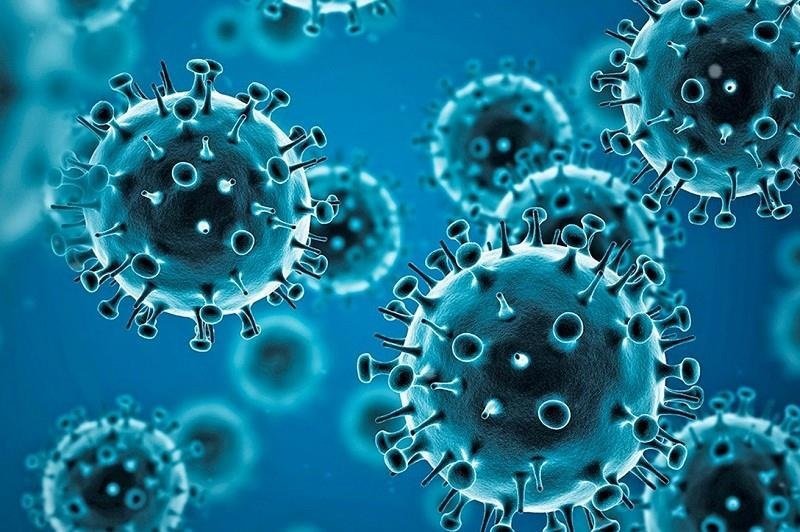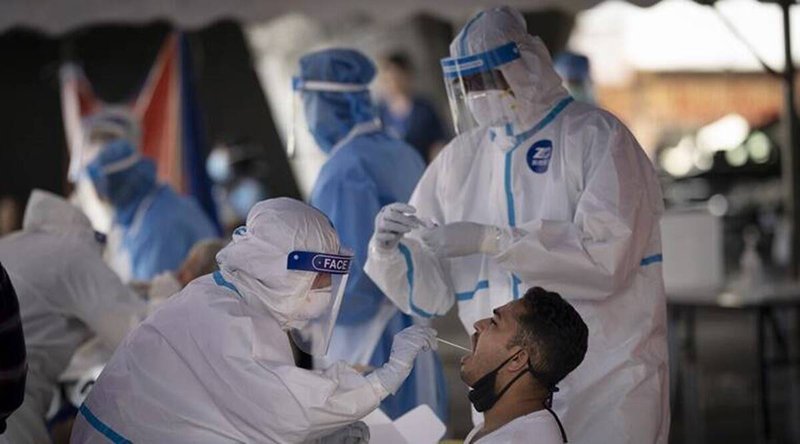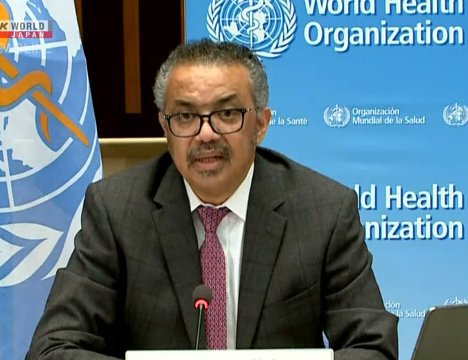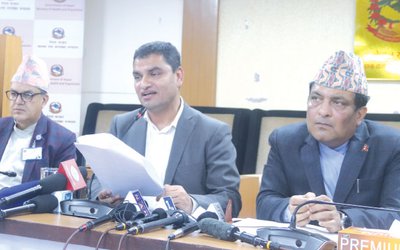
As the new variant of the novel coronavirus, Omicron, has been detected in Nepal, health experts and officials have announced several steps to prevent the virus. The new variant, which the WHO has labelled as 'of concern' has been found in two persons in Nepal 12 days after it was first reported in South Africa on November 24.
With the revelation of two cases, new Omicron Variants of Coornaviurs have already entered to Nepal. The serious concern is that number of cases in India is also growing. Given the nature of Nepal’s interactions with the south, Nepal can find it tough to prevent its entry in case the variant increases in India.
By barring the visitors and taking additional medical measures at TIA and border points, Nepal government has shown high concern on the virus. Nepal is yet to forget the crisis faced during the prevalence of Delta variant as Nepal faced a major health crisis in April 2021 with shortage of oxygen and medicines.
Joint-spokesperson of the Ministry of Health and Population, Dr Samir Kumar Adhikari confirmed that the new variant was found in samples taken from two suspected persons and carrying out tests on Sunday at the National Public Health Laboratory.
As he said, the new variant was confirmed in a 66-year-old foreign national and a 71-year-old who had come in his contact. They had arrived in Nepal from South Africa via Tribhuvan International Airport.

The Omicron was found through a gene sequencing test in the laboratory. The first coronavirus infection case was detected in Nepal on January 23, 2020. It was found in a person who had come to Nepal from Wuhan of China.
The PCR test carried out on the foreigner showed negative results when he first came to Nepal. It was found that he had also taken full dose of vaccine against COVID-19. A test was conducted on them on November 23 when they showed symptoms resembling COVID-19.
Joint-spokesperson Adhikari said both of them are kept in isolation as per the standard set by the government and recuperating their health at present. They are not showing any symptoms now and are under the supervision of the health workers.
Meanwhile, a PCR test carried on 66 persons who were included in 'contact tracing' of the two infected ones showed a negative report.
He said that surveillance and contact tracing would be made more effective following the variant reported in the country.
As part of the government's efforts to curb the virus, it requires negative PCR reports and COVID-19 vaccination reports for passengers at the Tribhuvan International Airport and at various transits with neighbouring India and China. Similarly, COVID-19 antigen tests for people entering Nepal through the borders with the countries have been managed, said Dr Adhikari. People having antigen tested positive for the virus will be PCR tested, he said.
In a bid to curb the spread of the variant, a Cabinet meeting on November 29 had decided not to grant Nepal entry for people going through South Africa, Botswana, Zimbabwe, Namibia, Lesotho, Eswatini, Mozambique, Malawi and Hong Kong where the virus variant has been reported.
Research about the scientific fact regarding the transmission rate of the Omicron virus and medical complications due to infection is underway.

There are many variants of Omicron and some of them are of concern. The Ministry has requested all to follow all the health protocols (appropriate use of mask, maintain social distancing, washing hands) and to participate in vaccination campaign to be protected from Omicron as like other variants of COVID-19.
According to the Ministry, the Omicron variant has already spread in 35 countries of the world. A total of 574 people have been infected with the Omicron virus in these countries so far.
A preliminary assessment by the World Health Organisation has mentioned that South East Asia is at high risk of Omicron. Omicron has already been confirmed in some of the countries of South Asia. Omicron was confirmed in India on Friday.
Increased Capacity
At a time when the government has decided to increase the existing capacity for gene sequencing testing as well, these facilities will bring a big change.
Similarly, the decision to keep travel history of the passengers and the samples of the positive ones will be collected through 'gene sequencing' method is another step. The government has urged Nepali citizens not to travel abroad unless they have urgent works.
Government employees and various government and non-government delegations are also required to obtain prior approval before traveling abroad.
The Ministry of Home Affairs has urged the public to pay special attention to the regular use of face masks, mandatory crowd control, social distancing and the use of sanitizer.
As the new variant is showing alarm bell, two new oxygen generation plants came into operation in Lumbini Provincial Hospital in Lumbini Province and Janakpur Provincial Hospital in Province 2.
Financed by the World Bank, these plants are part of a long-term solution for augmenting Nepal’s capacities for a stronger response to the COVID-19 pandemic and boost self-reliance of provincial hospitals to meet the needs of therapeutic oxygen.
The energy efficient, Pressure Swing Adsorption (PSA) oxygen generation plants were inaugurated by Dr. Madan Kumar Upadhyaya, Division Chief of the Ministry of Health and Population, and Faris Hadad-Zervos, World Bank Country Director for Maldives, Nepal, and Sri Lanka. Similar plants will be operational in the remaining five provinces – Damak Municipality Hospital of Province 1, Hetauda Hospital of Bagmati Province, Western Regional Hospital of Gandaki Province, Karnali Provincial Hospital of Karnali Province, and Mahakali Provincial Hospital of Sudurpaschim Province – by December 20, 2021.

“The government is making concerted efforts to strengthen the capacities of the public hospitals and ensure that they are self-sufficient and have adequate supply of medical oxygen to meet increased demand in the event of future waves of COVID-19,” said Birodh Khatiwada, Minister of Health and Population. “We appreciate the continued support that the World Bank and other development partners are providing to our efforts to respond to the pandemic effectively.”
The oxygen plants were procured, installed, and will be operated and maintained fully for a period of three years by UNOPS under the World Bank-financed COVID-19 Emergency Response and Health Systems Preparedness Project, which also financed 1,000 units of 10-liter oxygen concentrators distributed to peripheral health facilities across the country in June 2021. The plants will ensure uninterrupted supply of high-quality medical oxygen through the central medical gas pipeline system to hospital facilities, where installed. Additionally, the oxygen can also be used to fill at least 24 46.7-liter cylinders for emergency back-up and supply to peripheral hospitals or ambulance use.
“Having essential infrastructure, equipment, and supplies in the right places – such as these oxygen plants in strategically located, frontline hospitals in each province – is important to be able to respond to health crises posed by the COVID-19 pandemic,” stated Faris Hadad-Zervos, World Bank Country Director for Maldives, Nepal, and Sri Lanka. “We reaffirm our continued support to Nepal and Nepalese, to help build stronger and more resilient systems to tackle pandemics and other health shocks.”
Omicron Variant: Does It Bring Milder Illness?
Among 70 cases reported in Europe, half of the patients had no symptoms and half had mild symptoms. The Omicron variant, spreading now in southern Africa and detected in over 30 other countries, has prompted fears it could significantly undermine the effectiveness of vaccines against COVID-19.
Yet as scientists race to understand the full consequences of Omicron, some are also asking whether this new version of corona virus might cause milder illness than its predecessors. While they caution that it is far too early to draw conclusions, here is what is known so far:
WHAT DO THE DATA SHOW?
Evidence from initial cases of the new variant is limited. Among 70 cases reported in Europe that included information on disease severity, half of the patients had no symptoms and half had mild symptoms, according to a report by the European Centre for Disease Prevention and Control.
There were no cases of severe disease, hospitalization, or death. However, the European agency said it would require data on hundreds of cases to accurately assess disease complications, estimating that could take several weeks. In addition, most cases detected in Europe so far have been in younger people who were fully vaccinated, making them less likely to suffer severe illness.
In South Africa, where the daily number of reported COVID-19 cases doubled on, symptoms for reinvested patients and those infected after vaccination appear to be mild.
"Some evidence from South Africa suggests that it may actually cause more mild illness but … I caution you that a lot of the patients South Africa initially were among young university students," Dr. Carlos Del Rio, an infectious diseases expert at Emory University in Atlanta, said during an online briefing from the Infectious Diseases Society of America.
IS OMICRON A 'LESS FIT' VERSION OF CORONAVIRUS?
While data on real world infections continues to emerge, scientists are conducting laboratory studies to decipher Omicron. The variant has about 50 mutations not seen in combination before; including more than 30 mutations on the spike protein the corona virus uses to attach to human cells. Vaccines in current use target that spike protein.
"Typically when viruses accumulate a lot of mutations they lose some fitness," said Dr. John Wherry, director of the Penn Institute for Immunology in Philadelphia. Certain Omicron mutations may impair the ability of the virus to cleave, changing the behavior of the spike protein, he said.

Some scientists have theorized Omicron may have developed over a period of months in an immunocompromised individual, such as an HIV patient in southern Africa. If so, "the virus adapted not to kill that host," Wherry said.
There are competing theories that the latest variant evolved from an animal host.
WILL OMICRON BECOME THE DOMINANT VARIANT?
The other central question surrounding Omicron is whether it will overtake the Delta variant, which still accounts for the overwhelming majority of known infections worldwide. If Omicron does become dominant, but causes milder illness, it could mark a turning point toward the virus eventually becoming a seasonal threat, like influenza, said Sumit Chanda, an infectious disease researcher at the Scripps Research Department of Immunology and Microbiology in San Diego.
The European Union's public health agency said the Omicron variant could be responsible for more than half of all COVID-19 infections in Europe within a few months.
While the research into Omicron is underway, disease experts say people must remain vigilant against the coronavirus by getting either initial vaccinations or booster shots, as well as wearing masks in indoor or crowded settings, ventilating rooms and washing hands.
Vaccine Protects Against Omicron
So far, Israel has registered four cases infected with the new variant, while general morbidity remains low. There are indications that individuals fully vaccinated against corona within six months or with the booster are also protected against the Omicron variant, Health Minister Nitzan Horowitz said, after another two cases were identified, bringing the total to four.
“In the coming days we will have more accurate information about the efficacy of the vaccine against Omicron, but there is already room for optimism, and there are initial indications that those who are vaccinated with a vaccine still valid or with a booster will also be protected from this variant,” Horowitz said while visiting the Soroka Medical Center in Beersheba with Finance Minister Avigdor Liberman.
Later in the evening, a report by Channel 12 said the Pfizer vaccine is just slightly less effective in preventing infection with Omicron than with Delta – 90% as opposed to 95% – while it is as effective – around 93% – in preventing serious symptoms at least for those vaccinated with a booster.
The greatest concern for Nepal is the very rapid spread of this variant in South Africa, describing how the daily cases there rose from 200 cases to 2,000 cases in 10 days.
- MELAMCHI WATER SUPPLY: No Interruption During Monsoon
- Jun 25, 2025
- KOREAN RETURNEES: Successful Integration
- Jun 25, 2025
- UPPER TRISHULI-1: Engaging With Local
- Jun 25, 2025
- IME GROUP: Twenty Five Years Of Journey
- Jun 24, 2025
- NEPAL’S AIR POLLUTION: A Growing Health Concern
- Jun 24, 2025















